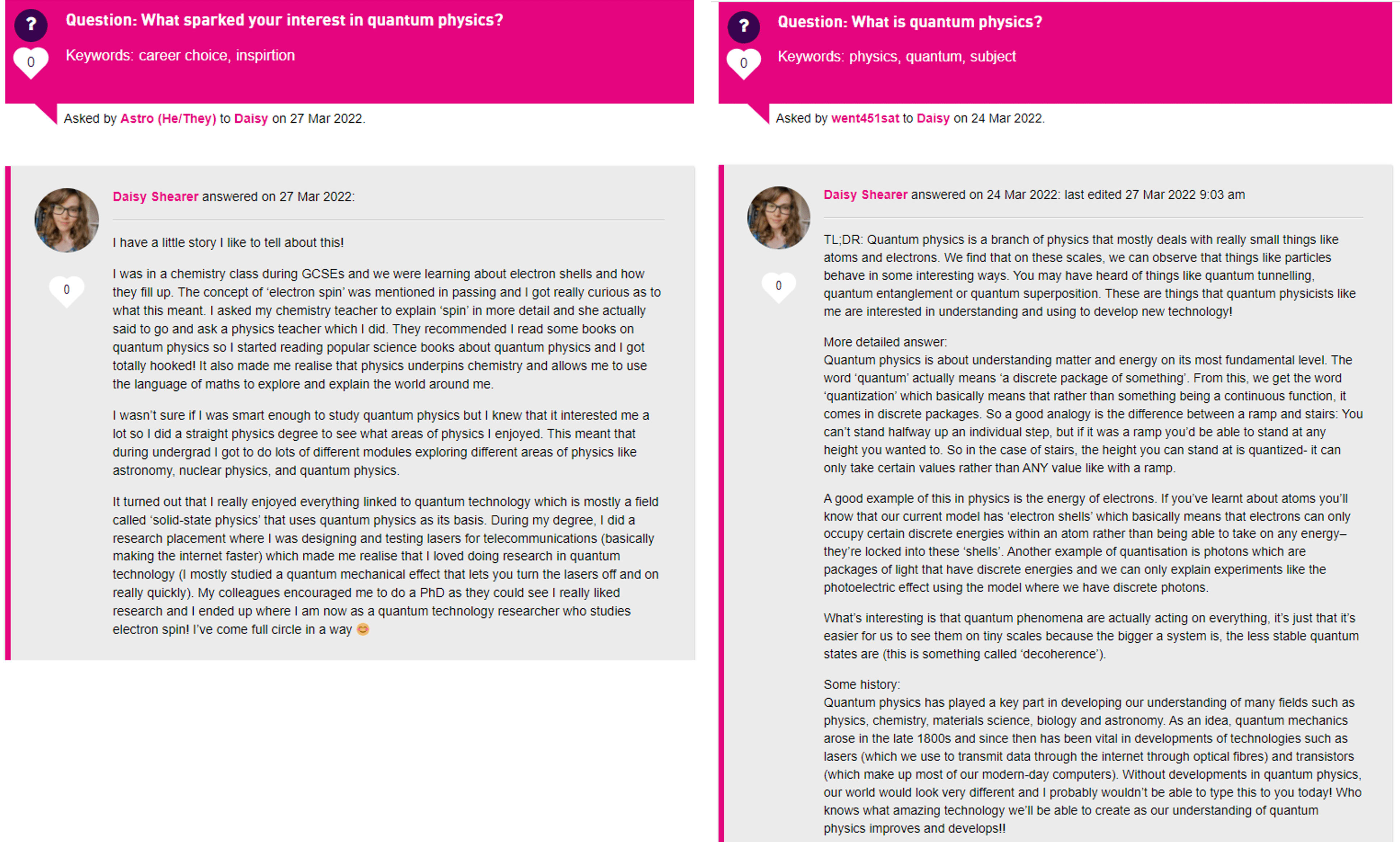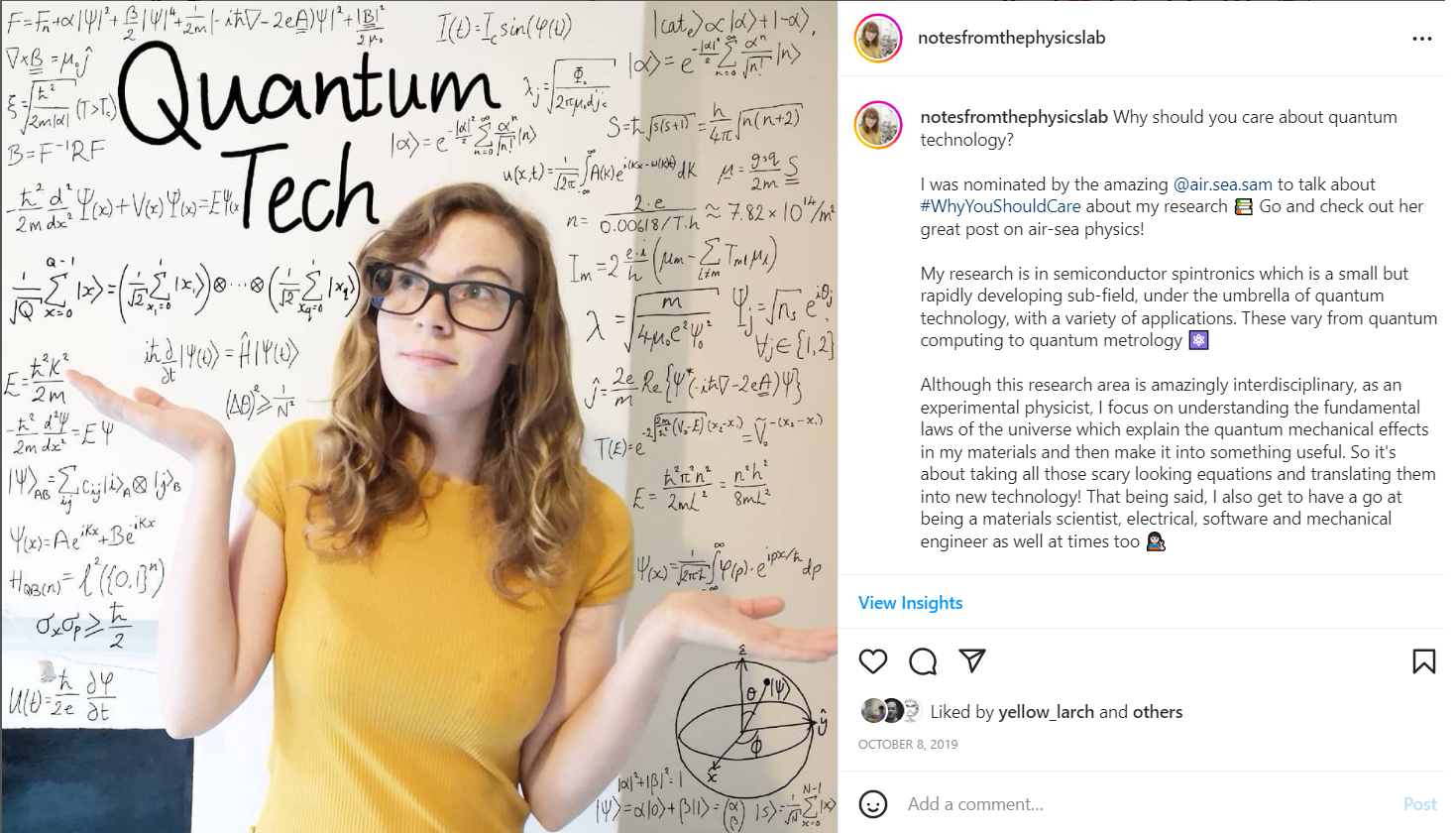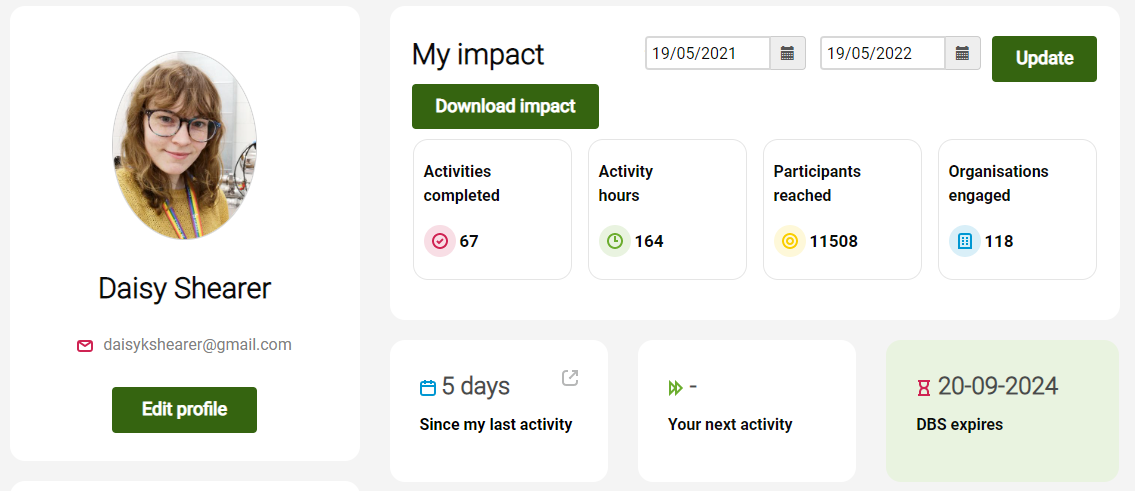Public engagement and outreach are becoming more prominent topics in the research community. This is exemplified in the Research Excellence Framework where the most recent assessment emphasizes public engagement when considering research impact and researchers are encouraged to submit impact case studies discussing public engagement efforts. More and more, this aspect of research is recognized and celebrated alongside the typical academic outputs like papers and conference presentations.
As someone whose main hobby is science communication, I wanted to share some of my experiences with outreach and public engagement that I’ve had throughout my PhD as well as highlighting some great opportunities that you can get involved in if you’d like to share your research with audiences beyond academia. This article will be quite STEM-focused but there are plenty of great outreach opportunities in other disciplines too!
Why is communicating research important?
Disseminating your research is probably one of the key outputs of your PhD. However, many researchers only share their work within the academic sphere. Personally, I think there’s a lot to be gained by dissemination beyond this including communicating your findings with laypeople and policymakers. The COVID-19 pandemic has really solidified in my mind the importance of clear, broad communication to a variety of people both in terms of research findings but also, crucially, so that more people understand how research works. You may also want to challenge stereotypes around what a researcher ‘looks like’ by acting as a role model through public engagement.
Beyond any philosophical reasons why you might want to communicate your research, it’s great for developing your presentation skills and it can also be really fun! Personally, I’ve found that public engagement has really improved my confidence, and it always reminds me why I love my subject. I’m even considering finding a job in public enagagement and outreach after I complete my doctorate because I enjoy it so much.
My Outreach and public engagement experiences
Public Engagement is usually understood as a two-way process of communicating with various audiences whereas outreach tends to be more one-way. Throughout my PhD, I’ve done a lot of outreach and public engagement. Here’s a bit of a taster of some of the things that I’ve been involved with:
The Quantum Garden
One of the first outreach projects I did during my PhD was ‘The Quantum Garden’ which I designed, built and managed in summer 2019. Gardening is one of my main hobbies and I’d been inspired by the Dark Matter Garden and the Reflecting Photonics Garden to do a mini version exploring some of the quantum technology research our group has published. I applied for an outreach grant through the physics department and was also supported by the widening participation team on this project. The result was a little garden/art installation in Guildford near the train station which even won a gold medal at ‘Guildford in Bloom’. Finding creative ways to reach new audiences with outreach is one of my favourite things about public engagement! You can learn more about this project here.

I’m a Scientist, Get me out of here!
This is one of the best ways to do public engagement if you’re quite new to it and want to build confidence. I’ve done I’m a Scientist twice now and really enjoyed it both times! This is a nice, structured way to engage with students throughout the UK and try your hand at explaining your work to them. Essentially, you sign up to a ‘zone’ and then compete against fellow scientists to win £500 to go towards an outreach project. I’ve never won my zone but it’s still incredibly rewarding. The format is a mixture of ‘live chats’ and asynchronous questions that students ask. It’s all text-based and moderated which makes it super accessible for students and for you to fit it around your schedule. To take part, you just need to sign up to register your interest and they’ll let you know if you get chosen to take part in a zone. There’s also the added bonus of meeting other scientists who are interested in outreach!

Social Media
A few months into my PhD I started an Instagram page to act as something of a visual diary of my PhD. Over time, this has developed into a science communication outlet that has quite a large audience. I’ve even written a bit of a guide about using Instagram to communicate research on my blog. Here’s an example of the kind of posts I make for Instagram:

Using social media to communicate research is becoming more and more popular and I’d encourage anyone who’s interested to give it a go! Twitter is a great place to start as there are lots of academics talking about research there in the #AcademicChatter hashtag. I like to use social media as a testing ground for ideas and for practising my science communication skills. It’s a great way to engage others in a dialogue about your work- just try not to get too bogged down with numbers and the algorithm!
Blogging and Article Writing
My blog came about as an extension of my Instagram page. I really enjoy writing longer-form pieces about physics, my research, PhD life, and EDI topics and my blog is a place for me to do that. It’s a nice space that’s not dictated by an algorithm where my audience can subscribe to get updates from me directly. I have also written various guest-blogs and I’m a PhD student Contributor for Physics World. If you enjoy writing for a broad audience, there are plenty of potential opportunities for sharing your research and your passion for your subject through writing blogs and articles such as writing for The Conversation.
STEM Ambassadors
I can’t recommend STEM Ambassadors highly enough. It’s free to sign up and they sort out a DBS check for you as well as training on running STEM activities for young people. It’s the place I go the most for finding outreach and public enagement opportunities. The platform allows STEM professionals to connect with teachers and community group leaders to deliver STEM activities. These can be about your research or just around STEM in general. Generally, teachers will post to reach out to STEM ambassadors for various events (like STEM weeks or STEM club sessions) but you can also develop your own ‘offers’ if you have activities that you’ve developed yourself. The platform also encourages evaluation of your activities and gives you some nice statistics if you like tracking things like me!

Here are just a few examples of activities that I’ve done through STEM Ambassadors:
World Space Week

I was part of the organizing team for World Space Week 2021 which was held in October 2021. As well as manning the IOP stall and talking about physics, I was in charge of social media for the day and I was even live on BBC Surrey in the morning to get the word out about our event!
British Science Week Webinar

This year, I did webinar on quantum computing during British Science Week. My activity involved exploring classical and quantum logic, including some fun experimentation with creating logic circuits in Tinkercad. I’m really proud of this activity that I developed as I have a remote and in-person version and I plan to offer it as a STEM Ambassador Offer in the future.
‘The Physics of Rainbows’ Activity

Before the pandemic, I did this activity in a local primary school as part of their STEM week. As well as covering the physics concepts and experimenting with colour, I also did a mini careers talk exploring my route into quantum technology.
FIRST® LEGO® League
The Institute of Engineering and Technology run the FIRST® LEGO® League competition in the UK and it’s super easy to sign up as a volunteer for their events. It’s essentially a robot designing and coding competition for school-age children and is a long-established STEM outreach initiative. You can volunteer as a referee or judge at the competitions or as a mentor for teams throughout their projects. I was a referee for two competitions this year and had a blast, even with the hybrid format. I’m hoping to volunteer at some events in-person next year too!
More ideas to get involved with!
There are way too many potential initiatives to get involved with for me to discuss in detail in this article, but here’s a little list of additional ideas to explore:
- Pint of Science
- Bright Club
- Café Scientifique
- Soapbox Science
- Summer Science Exhibition
- Three Minute Thesis
- FameLab
- 3 Minute Wonder
- Widening Participation and Outreach Student Ambassador
- The Brilliant Club
I hope this post gave you some inspiration to consider getting invovled with public enagagement if you’re interested in it!
